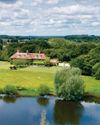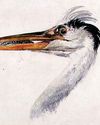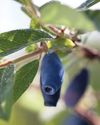No fin compares to you

THE words baby shark may have you humming a maddeningly catchy tune for the rest of the day, but they transport me to a Devon beach and an up-close encounter with the most adorable shark I’ve ever seen. A small-spotted catshark, it was swimming lazily around a rock pool. Roughly the size of a cigar, it was covered in speckles and it must have only just hatched out of its egg case, where it had been wriggling and growing for close to a year. I couldn’t resist picking up the little shark for a moment and gently holding it in the palm of my hand.
Britain is not renowned for its sharks, yet, beneath the waves, there’s a rich mix of species. The tiny catshark I found is one of 21 kinds known to reside full time in UK seas. An additional 40 or so arrive each year as seasonal visitors. Together, they range from deep-sea oddballs and plankton-sifting giants to superfast sprinters and flattened seabed sitters.
All of them are members of the same group of fish, known as elasmobranchs, the direct ancestors of which have been swimming around the ocean for at least 400 million years. It’s generally easy to spot a shark from a bunch of other fish. They have a characteristic bendy skeleton and jaws that are made not from hard bone, but cartilage—the same soft material from which human noses and ears are made. Sharks don’t have scales either, but skin covered in tiny teeth-like structures, called denticles, which makes them smooth if you stroke them from head to tail and rough like sandpaper in the other direction.
By the skin of their teeth: in folklore and culture
This story is from the August 16, 2023 edition of Country Life UK.
Start your 7-day Magzter GOLD free trial to access thousands of curated premium stories, and 9,000+ magazines and newspapers.
Already a subscriber ? Sign In
This story is from the August 16, 2023 edition of Country Life UK.
Start your 7-day Magzter GOLD free trial to access thousands of curated premium stories, and 9,000+ magazines and newspapers.
Already a subscriber? Sign In

Past and present master
As TEFAF Maastricht nears the 50th anniversary of its first incarnation, astounding works from earlier centuries still make their way to the Dutch fair, but the size and quality of its modern and contemporary art offering has also increased

In search of Arcadia
In any country estate, owners ought to be able to find refuge from the busy world—something entirely possible at these three properties

Like duck to Turner
TURNER’S HOUSE in Twickenham, west London, is more than his home: it’s a window into his life.

Island state of mind
Libby Brodie reveals everything you need to know about the Maldives, from getting there in style to sustainable certifications, as Rosie Paterson visits four of the best resorts

A house of many inspirations
High Wardington House, Oxfordshire The home of Mr and Mrs Norman Hudson A pre-eminent country-house adviser has created a home from a 300-year-old farmhouse and farmyard

It all happened on Booksellers' Row
Fire, murder and regicide plotting—Cecil Court has a colourful history and remains one of London's most atmospheric streets, says Huon Mallalieu, who has spent a lifetime browsing there

The imitation game
Feats of cunning and creativity, Britain's thousands of defensive pillboxes were disguised as Gothic lodges, haystacks, public loos or even branches of WHSmith, discovers Harry Pearson

All 'Clough-ed up'
A romantic experiment surrounded by the natural majesty of North Wales, Portmeirion began life as an oddity, but has evolved into an architectural phenomenon kept alive by dedication, discovers Ben Lerwill

A touch of honey
THE first coffee of the day, the first warm-car interior of late winter that promises imminent spring, the first late-spring swallow: firsts hold a special place in our hearts and so, too, the first fruit of the year.

Are you sitting sociably?
Carefully placed furniture encourages conversation, says Emma Burns of Sibyl Colefax & John Fowler
